Master Farrier puts the focus on hygienic bedding management.
Bedmax shavings are made specifically to help owners combat the health risks to their horses in the stable. After respiratory disease, hoof disease is one of the most common equine health problems caused by poor stable hygiene, so we asked one of the UK’s top farriers how a high quality bedding like Bedmax shavings can help you keep your horses’ hooves clean and healthy.
For the best expert advice on the importance of hoof health, who better to ask than Craig McNeil, one of only 100 people in the UK to hold the status of Master Farrier in The Worshipful Company of Farriers.
Like Bedmax, Craig is a true Northumbrian, and this is where his career as a farrier began. After completing his four-year apprenticeship with a Diploma in 1993 he moved to his current base in Yorkshire. He became an Associate of the Worshipful Company of Farriers in 2009 and attained Master Farrier status in 2010.
Craig’s work is very varied. On a daily basis he shoes many types of horses ranging from Shetland ponies to Shire horses, trusted equally by owners who hack and those who compete at the very highest level.
There are several factors which influence hoof health, he says, including genetics, conformation and nutrition, but the key factor we’re talking about here is the effect of environmental conditions on the hoof, and that’s where bedding plays a major part.
What makes a hoof vulnerable to disease?
With a prolific blood and nerve supply the horse’s foot is a very complex structure. It is made up of protein, mainly keratin, and encapsulates connective tissue, the deep digital flexor tendon (DDFT), ligaments and bones which support the weight of the horse, suspended by the laminar within the hoof capsule
The proteins that make up the horse’s foot are susceptible to anaerobic bacteria which attack and digest horn and which can lead to necrosis (dead tissue), so anything we can do to reduce the impact of these anaerobes helps protect the function of the hoof. When we add a shoe into the mix we are creating a perfect anaerobic environment between the foot and the shoe for these bacteria to thrive.
There are things we can do to try and mitigate against these horn digesting bacteria, but the most important thing is hygiene.
What are the most important hoof problems you encounter in your work?
The most common ailments that I see associated with poor hygiene is thrush, a foul smelling black/grey exudate affecting the frog, mainly in the central cleft and lateral sulci.
White line separation at the junction between the hoof wall and sole, also known as the horny laminar, can lead to hoof wall cracks as the bacteria invade and attack the white line which can ultimately lead to a condition known as ‘seedy toe’. This is a condition that eats away at the laminar and can track all the way behind the hoof wall and lead to lameness. I often see this associated with horses bedded on poorly managed sawdust where anaerobic bacteria thrive.
And in the most extreme conditions, Canker, a necrotic foot disease, which requires veterinary intervention to debride all the necrotic tissue. It’s a very painful , invasive procedure with a long period of dedicated aftercare.
How can bedding play a part in preventing hoof problems and/or disease?
A good clean, aerated stable environment is essential for hoof health to reduce the impact of anaerobic bacteria. Some beddings such as pine shavings have antimicrobial properties, which is an advantage.
If horses are bedded on a wet, soiled bed then these problems of horn-digesting bacteria will be significantly increased. Beds that don’t allow free drainage also tend to create horn deteriorating hoof problems.
There’s a saying: ‘Where there’s muck there’s money’ but in the case of a horse’s hooves, ‘Where there’s muck will cost you money…’ So it’s very important to keep the bed clean and aerated. And it’s vital to pick the feet out regularly and if you can, not only the frog and sole, but between the shoe and foot.
Shoeing hygiene is vital
For any farrier, a dry, clean shoeing area is vital. The hoof wall is comprised of very small, tightly packed horn tubules. When we trim the foot these horn tubules are exposed so when we put the foot down after trimming, if it’s put down on a dirty surface, then the dirt is absorbed by the open tubules. Hot shoeing can seal these horn tubules prior to the application of a shoe but it can also seal the dirt in. Also, the nails we need to drive into the horse’s foot to attach the shoe can carry dirt and bacteria deep into the hoof wall. I tend to use copper coated nails these days in the belief that copper is antimicrobial so hopefully helps to mitigate this risk.
It’s also important hose the mud off your horse’s feet prior to stabling, particularly in the winter, because as the mud dries it draws the moisture out of the hoof wall, which can create dry, brittle feet which can result in problems with shoe retention.
Craig’s top tips for hoof hygiene and health:
Choose a bed that’s…
- Easy to clean
- Free draining
- Allows air to circulate around the hoof
- Preferably offers some antimicrobial protection
Additionally….
- Avoid your horse standing in wet, soiled bedding
- Pick your horse’s feet out regularly to prevent disease
- Hose the mud off your horse’s feet prior to stabling
- Make sure your horse’s feet are as clean and dry as possible prior to shoeing
- Provide your farrier with a clean and dry shoeing area




